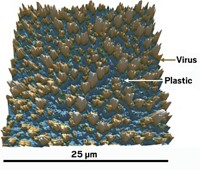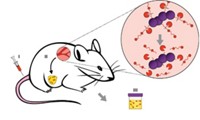Advertisement
Grab your lab coat. Let's get started
Welcome!
Welcome!
Create an account below to get 6 C&EN articles per month, receive newsletters and more - all free.
It seems this is your first time logging in online. Please enter the following information to continue.
As an ACS member you automatically get access to this site. All we need is few more details to create your reading experience.
Not you? Sign in with a different account.
Not you? Sign in with a different account.
ERROR 1
ERROR 1
ERROR 2
ERROR 2
ERROR 2
ERROR 2
ERROR 2
Password and Confirm password must match.
If you have an ACS member number, please enter it here so we can link this account to your membership. (optional)
ERROR 2
ACS values your privacy. By submitting your information, you are gaining access to C&EN and subscribing to our weekly newsletter. We use the information you provide to make your reading experience better, and we will never sell your data to third party members.
Analytical Chemistry
The Wide Open (Dynamic) Range
Clinical Diagnostics: Improved immunoassay measures prostate cancer biomarker over a range of four orders of magnitude
by Jeffrey M. Perkel
March 3, 2011

In the wake of a radical prostatectomy, serum levels of prostate-specific antigen (PSA), a prostate cancer biomarker, generally dive below the detection limit of clinical assays. But the protein may not have disappeared. Rising PSA levels can presage disease recurrence, so doctors would like to catch such relapses early. Now a clinical diagnostics company has improved a PSA assay to detect the marker over a wide range of concentrations, even down to attomolar levels (Anal. Chem., DOI: 10.1021/ac103161b).
In 2010, researchers at diagnostics development company Quanterix in Cambridge, Mass., described a PSA assay that could measure between about 0.4 and 400 femtomolar in PSA—extending some four orders of magnitude below the limit of standard clinical immunoassays (Nat. Biotechnol., DOI: 10.1038/nbt.1641). But PSA levels in patients can vary greatly, and this assay wasn't useful for higher concentrations of the protein. In those cases, a clinician would have to dilute the samples and redo the test. The team wanted to extend the dynamic range of their assay by another order of magnitude.
The current and 2010 assays are variants of a standard enzyme-linked immunosorbent assay, says lead author David Duffy. First, a researcher captures PSA with antibody-coated beads. The researcher then adds a second PSA antibody and an enzyme that binds to it. Finally, the scientist loads the beads into a so-called "single-molecule array," which contains 50-femtoliter wells, and adds a molecule that fluoresces when it reacts with the enzyme.
The difference between the new and 2010 assays is how the researcher counts the glowing beads. When PSA levels are low, most beads don't glow. The researcher asks a simple digital or yes/no question of each bead: is it glowing or not? At low PSA concentrations each glowing bead attaches to only one or a small number of antigen molecules, so fluorescence intensity doesn't matter. At higher PSA concentrations, every bead glows, so simple bead counting no longer works. Instead, the researcher uses fluorescence intensity to count the enzymes, and thus amount of PSA, on each bead. This is the assay's analog mode.
Using this combined digital-analog approach, the researchers first demonstrated the detection limits of the assay by directly attaching the enzyme at varying concentrations to beads. The assay could detect concentrations over six orders of magnitude, from 220 zeptomolar to 316 femtomolar. When they tested the assay with real human serum they could measure PSA concentrations between 250 attomolar and 3 picomolar.
Measuring PSA over four orders of magnitude is "really powerful," says Duffy: With such a dynamic range, clinicians could test patients with varying PSA levels in one pass, he says.
"These technologies are game changing," says John Todd, vice president of research and development at Singulex, another diagnostics firm. Ultrasensitive immunoassays, Todd says, could enable biomarker research that would illuminate, for instance, the clinical implications of rising but sub-picomolar levels of PSA.
Shan Xiang Wang, who develops ultrasensitive immunoassays at Stanford University, calls the Quanterix assay "very impressive." What the company needs, he says, is "a real killer application," such as early cancer detection or the ability to detect multiple biomarkers at once. "That would be a great boost to their commercialization potential," Wang says.




Join the conversation
Contact the reporter
Submit a Letter to the Editor for publication
Engage with us on Twitter